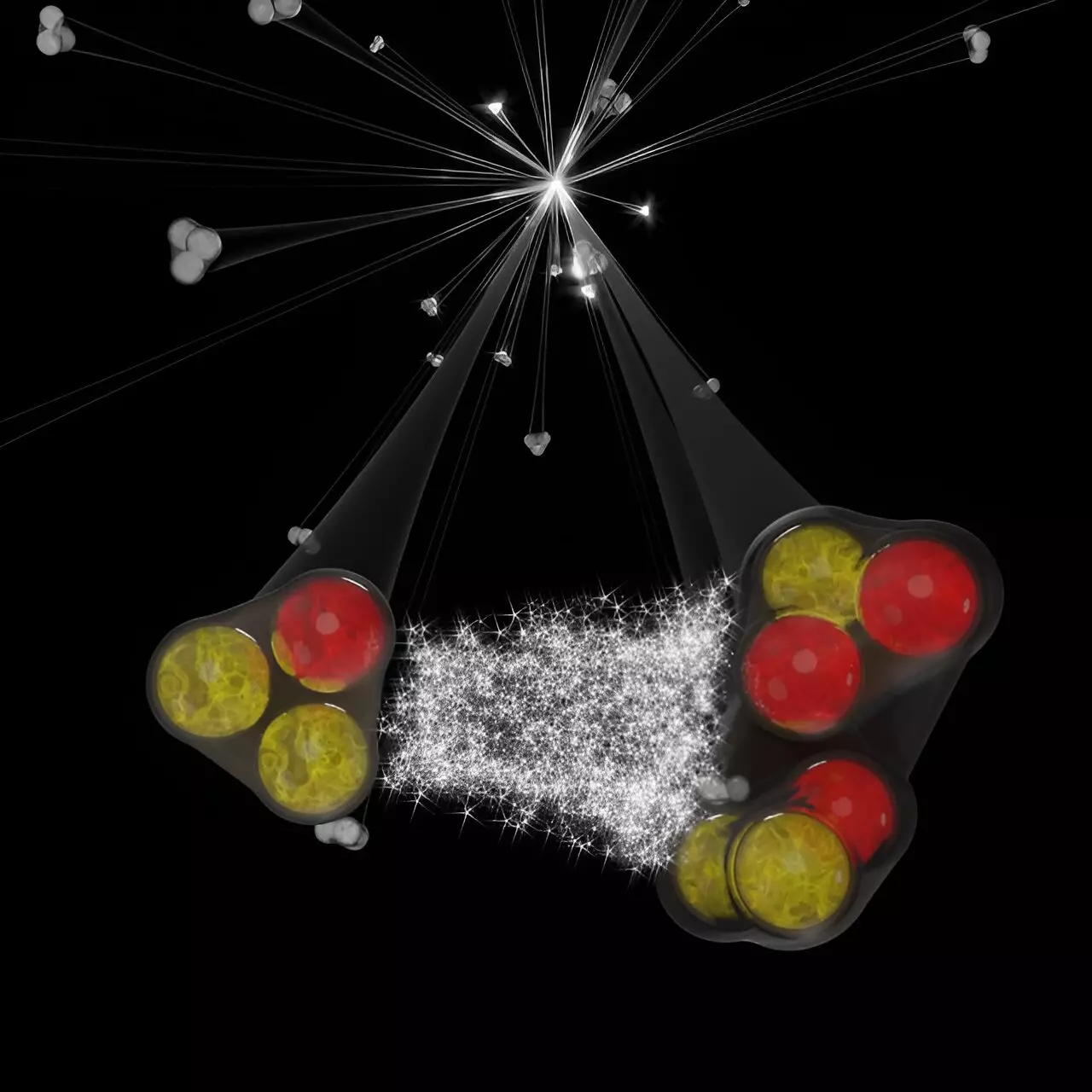Recent advancements in the understanding of nuclear forces have emerged from cutting-edge research conducted by the ALICE collaboration, with their findings published in the prestigious journal, Physical Review X. This article delves into the innovative studies of correlations in kaon-deuteron and proton-deuteron systems. Such research is pivotal, as it illuminates the complexities of three-body interactions, which pose substantial challenges for physicists seeking to comprehend fundamental nuclear forces.
Traditional physics has primarily focused on the interactions between pairs of particles to define fundamental forces. However, this approach becomes complicated when analyzing systems that involve three or more particles, particularly in the realm of nucleons, which are the building blocks of atomic nuclei. The new insights provided by the ALICE collaboration open avenues for investigating the forces governing nuclear interactions in multi-particle environments. As nuclear matter behaves unpredictably at high densities, understanding these forces is essential for not only creating theoretical models but also for predicting real-world phenomena, such as the intricate behaviors of neutron stars.
Your Window into Quantum Dynamics
Within the high-energy collisions of protons at the Large Hadron Collider (LHC), particles are produced in close proximity, often within a scale less than a femtometer (10^-15 meters). This dense environment poses the intriguing question: how do these particles interact in such confined spaces before dispersing? Examining whether two particles share a mutual influence based on their momenta and spatial arrangement allows researchers to capture vital information about the underlying quantum statistics and forces at play.
For example, in an event where a deuteron—a bound state of a proton and neutron—collides with either a proton or kaon, we effectively create a three-body system. Analyzing the correlations between these particles can yield insights into their interactions, serving as a powerful tool for probing the nuances of quantum dynamics.
Methodology of Correlation Analysis
The ALICE collaboration employs sophisticated particle identification technologies to scrutinize the correlations arising from high-energy proton-proton collisions, specifically at an impressive center-of-mass energy of 13 TeV. By measuring correlation functions, researchers can derive the extent of inter-particle interactions. In this case, a function value of unity would signify an absence of correlation, while deviations from this indicate various interaction strengths: values above one suggest attraction, and those below imply repulsion.
The experimental data revealed that both kaon-deuteron and proton-deuteron systems exhibited repulsive interactions, denoted by correlation function values below unity at low transverse momenta. This finding underscores the complexity of nuclear forces and provides valuable insights into the behavior of particles under extreme conditions.
An interesting aspect of the ALICE collaboration’s findings is the differentiation in handling kaon-deuteron and proton-deuteron correlations. The kaon-deuteron correlations were adeptly described using a two-body model incorporating both Coulombic and strong interaction effects. However, the proton-deuteron correlations presented more challenges, necessitating rigorous three-body calculations to account for the fundamental structure of the deuteron itself.
Success in accurately modeling these diverse interactions further illustrates the sensitivity of correlation functions to short-range dynamics within three-nucleon systems. This nuanced approach not only enhances the understanding of the current data but also sets a benchmark for future advancements in nuclear physics research.
Future Implications and Extended Research Prospects
The innovative methodologies established through this analysis have the potential for wider applications, especially as new data from upcoming LHC Runs 3 and 4 become available. Plans to extend similar analyses to investigate three-baryon systems, particularly in the strange and charm sectors, hint at an exciting landscape for future nuclear physics explorations. The ability to decode complex interactions in systems that are typically hard to access experimentally could yield revolutionary insights into the behavior of matter under extreme conditions.
The ALICE collaboration’s research not only sheds light on the enigmatic realm of three-body nuclear interactions but also paves the way for further inquiry into the underlying dynamics of particles at high energy. As physicists continue to unravel the intricacies of nuclear forces, the collaborative efforts at the LHC stand as a testament to the relentless pursuit of knowledge in understanding the universe’s building blocks. This evolving field promises not only to enhance theoretical frameworks but also to inspire future technologies and applications, ultimately enriching our comprehension of the fundamental forces shaping our physical world.


Leave a Reply